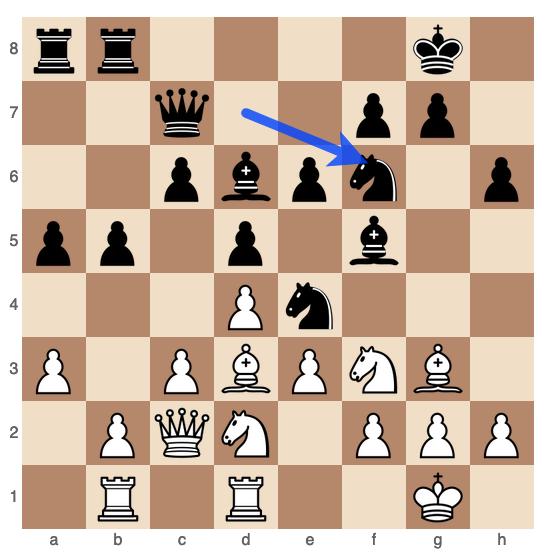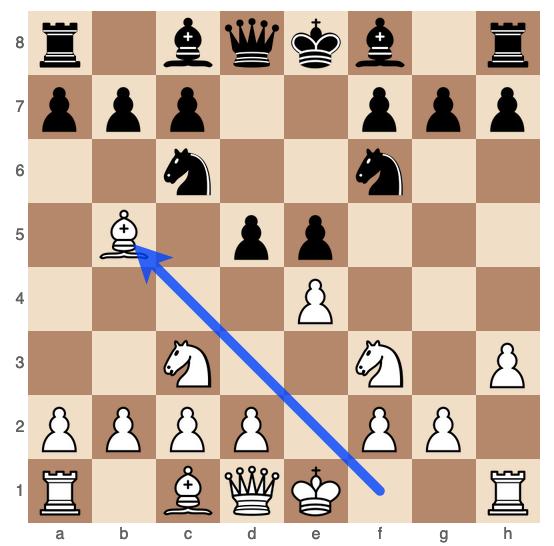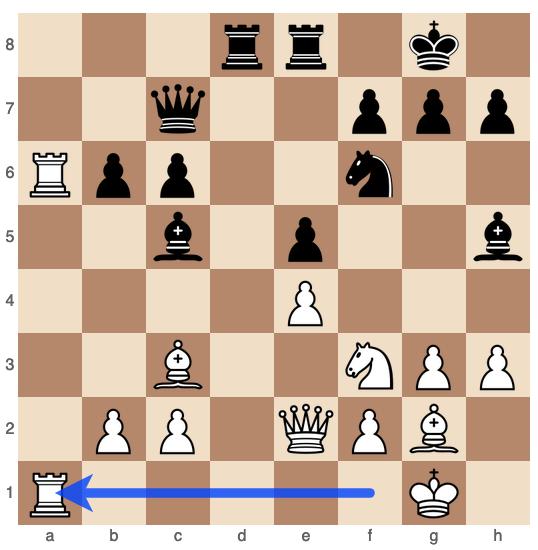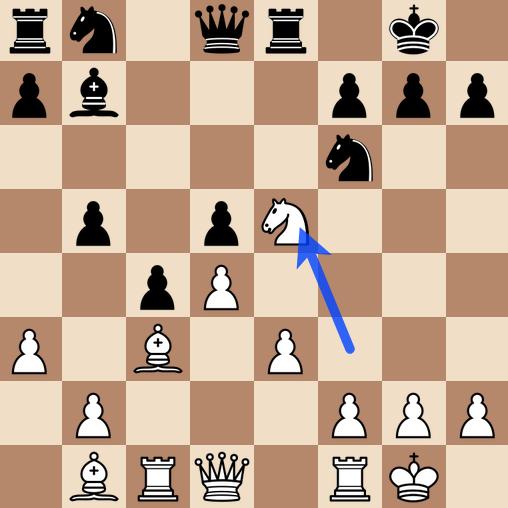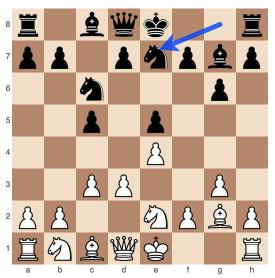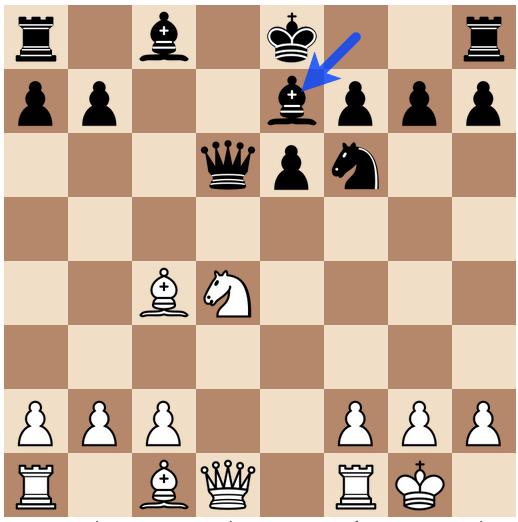In this game from the Titled Tuesday tournament, Guillermo Baches (Chessllermo) plays with the black pieces against Gary Leschinsky. The game, originating from the Reti Opening, demonstrates Baches’ deep understanding of positional play, strategic exchanges, and tactical opportunities. Baches capitalizes on a series of inaccuracies by his opponent to secure a decisive victory in just 26 moves.
The Opening
The game begins with the Reti Opening (1. Nf3 d5 2. b3), where White adopts a flexible setup aiming for a quiet, hypermodern approach. Leschinsky fianchettos his bishop early with 3. Bb2, aiming to control the long diagonal. Baches responds with a solid 3…Nf6 and 4…Bd6, developing his pieces naturally and preparing to castle.
As the opening progresses, Baches grabs space on the queenside with 6…a5 and 8…a4, looking to challenge White’s setup directly. Leschinsky’s 7. c4 and 8. d3 indicate a slower approach, which gives Baches the opportunity to start seizing the initiative with 9…a4. This move gains space and begins to create weaknesses in White’s pawn structure, specifically targeting the b3 square.
The Middlegame
The middlegame starts to take shape after White pushes 10. Nbd2, aiming to complete development and possibly prepare e4. However, Baches is quick to exploit the situation with 10…e5, gaining a strong foothold in the center and setting the stage for future tactics.
The critical turning point arrives after 12. fxe3, where Baches spots the opportunity to create an imbalance. With 13…Ng4, Baches places immediate pressure on White’s position, forcing awkward moves. Leschinsky’s 14. Nb3 Bxe3+ 15. Kh1 allows Baches to continue with a series of powerful moves, exchanging pieces in a way that improves his position significantly.
After 17. Qd2 Ne3, Baches’ knight becomes a powerful piece, dominating the center and preparing for a tactical sequence that will open up the game. Leschinsky’s position is becoming increasingly difficult as Baches continues to activate his pieces with 18…Nxg2, leading to significant material gain and an exposed White king.
The Endgame
The game transitions quickly into an endgame after 19…Rxa4, where Baches has a decisive material advantage. White is left with an exposed king and weak pawns, while Baches’ pieces dominate the board. The final sequence begins with 21…Bxd3, where Baches eliminates White’s last strong pawn and simplifies into a winning rook endgame.
After 24…Rc2, Baches activates his rook, threatening multiple pawns and further simplifying the position. White’s attempts to generate counterplay with 25. Rg4 are met with a calm and precise response. The game concludes swiftly after 26…Rg7+, where Baches forces a resignation as White is unable to stop the decisive threats against his king and remaining pawns.
Conclusion
This game is a brilliant demonstration of how to handle the Reti Opening from the Black side, showcasing how to seize the initiative early and capitalize on your opponent’s inaccuracies. Baches expertly exploited positional weaknesses and utilized tactical motifs to transition into a winning endgame.
Key Lessons:
- Seizing space early and forcing your opponent into defensive moves can lead to long-term weaknesses in their position.
- Tactical awareness is crucial, especially when you have a lead in development or a superior pawn structure.
- Simplifying into a winning endgame is often the best way to convert an advantage when your opponent’s position is compromised.
“Patience in chess is about knowing when to strike and when to wait—each move should either strengthen your position or weaken your opponent’s.” Baches exemplified this by methodically increasing his advantage and converting it into a clear victory.

